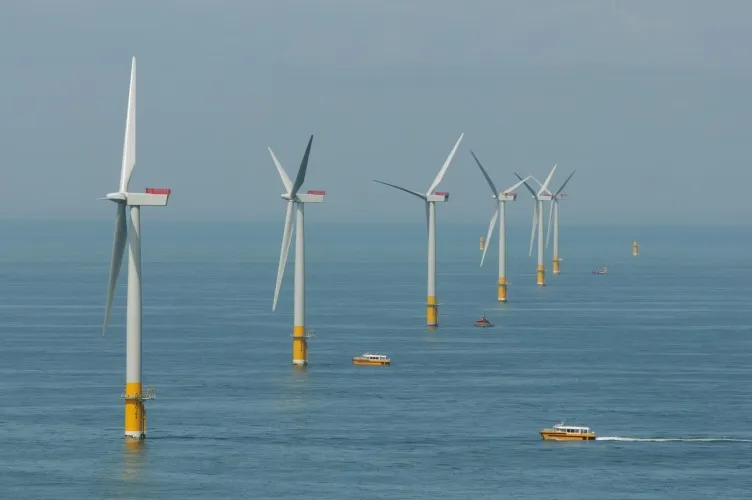
Japan strengthens local offshore renewables market with coastal waters law
It assigns property management laws to the general waters in Japan’s coastal areas.
Japan is promoting the use of marine areas for the development of offshore renewable projects in a law that was implemented in April 2019, according to Nishimura & Asahi.
The law was formed as a resolve to both systemic and technological issues that have hindered efforts to develop Japan’s offshore renewable market despite its potential capacity, said Maya Ito, one of the note’s co-authors.
The government announced a target energy mix that includes 22% to 24% of renewable energy sources by 2030, 1.7% of which will be comprised of wind power projects. It is estimated that 10GW of wind capacity will be required to meet this target, the firm noted.
According to Ito, the act is significant because it addresses some of the key systemic issues affecting offshore renewable projects, such as: occupying general sea areas, or “general waters”; obtaining a consensus among project stakeholders; and selecting project operators under the Japanese feed-in tariff (FIT) system.
As the vast majority of Japan’s coastal waters are not subject to property management-related laws, the new act addresses builds a nationwide regime for the occupation of general waters for the development of offshore renewable projects, which includes the designation of specific zones for the promotion of offshore renewable projects or “promotion zones”; and a public tender system to identify and nominate developers.
The Ministry of Economy, Trade and Industry (METI) and the Ministry of Land, Infrastructure, Transport and Tourism (MLIT) will be then responsible for the identification and designation of promotion zones.
Nishimura & Asahi noted that in assessing whether a particular area should be designated as a promotion zone, METI and the MLIT will consider the following criteria:
- the site's environment and climate, as well as its power output potential;
- the potential negative impact on any sea routes or ports;
- the capacity to construct the project at the site, including transportation of supplies and personnel, and the ability to maintain the facility at the site;
- the ability to secure the facility to the electrical grid;
- any interference with, or impact on, fisheries; and
- whether the site extends into any port area or other areas outside the general waters.
The act provides that prior to designating any promotion zone, METI and the MLIT will engage in a formal consultation process with local stakeholders via the establishment of what the act refers to as councils.
“The purpose of the council is for METI and the MLIT to share opinions among stakeholders in order to achieve a consensus regarding the treatment of the proposed site. The act provides that all stakeholders represented must respect the determinations of the council. However, it is important to note that the act does not prescribe the format for these discussions or define a 'consensus' for these purposes,” Ito observed.
Selection of developers
On the other hand, parties interested in developing offshore renewable projects within project zones, or developers, will be appointed via a public tender offer process. METI and the MLIT will prepare and issue occupancy guidelines for each offshore renewable project development within a promotion zone.
Developers that wish to develop and operate a renewable project in a promotion zone in response to any occupancy guidelines must submit an occupancy plan to METI and the MLIT.
METI and the MLIT are responsible for the evaluation of occupancy plans and the appointment of developers.
Once appointed, a developer will apply to METI for FIT certification, and apply to the MLIT for an occupation licence for the project zone. The act permits the MLIT to offer developers occupation licences for up to 30 years, according to the note.
“The aim is that this 30-year period will be sufficient to cover the development stage, operations (ie, the 20-year FIT period) and the facility's ultimate decommissioning,” Ito said.
Nishimura & Asahi found outstanding issues in the act such as the absence of detailed rules on how certain procedures will be implemented, such as how a consensus amongst council members will be determined.
According to Ito, the act is also silent with respect to the issue of connecting facilities to the grid. “Whilst this remains to be confirmed, it appears that each developer will be responsible for directly negotiating the connection of any offshore renewable facility with the applicable utility outside the framework of the act. Costs for the interconnection work will be shared by the developer and the applicable utility,” she said.
The act also does not establish a framework by which a developer may conduct the various required environmental assessments. “As such, developers looking to prepare an occupation plan and develop an offshore renewable facility must conduct the required environmental assessments in parallel to the procedures set out under the act,” Ito added.
MET and MLIT on the move
According to Nishimura & Asahi, it is anticipated that METI and the MLIT will prepare and publish guidelines on the operation of the act based on the conclusions of this joint committee. On 8 February 2019 METI and the MLIT began collecting information from prefectural governments regarding candidate general waters areas for designation as promotional areas.
The first promotional area may be determined during fiscal year 2019 and the first public offering for the development of such a promotional area in accordance with the new act may take place in 2020.
“The offshore wind projects envisaged by the new act are considerably larger in scope than those contemplated under existing renewable energy project programmes. It remains to be seen how the METI and MLIT guidelines on the act will be received by the market and whether they will achieve their objective of continuing to encourage interest and participation in the growing Japanese offshore wind market,” Ito said.



















 Advertise
Advertise







